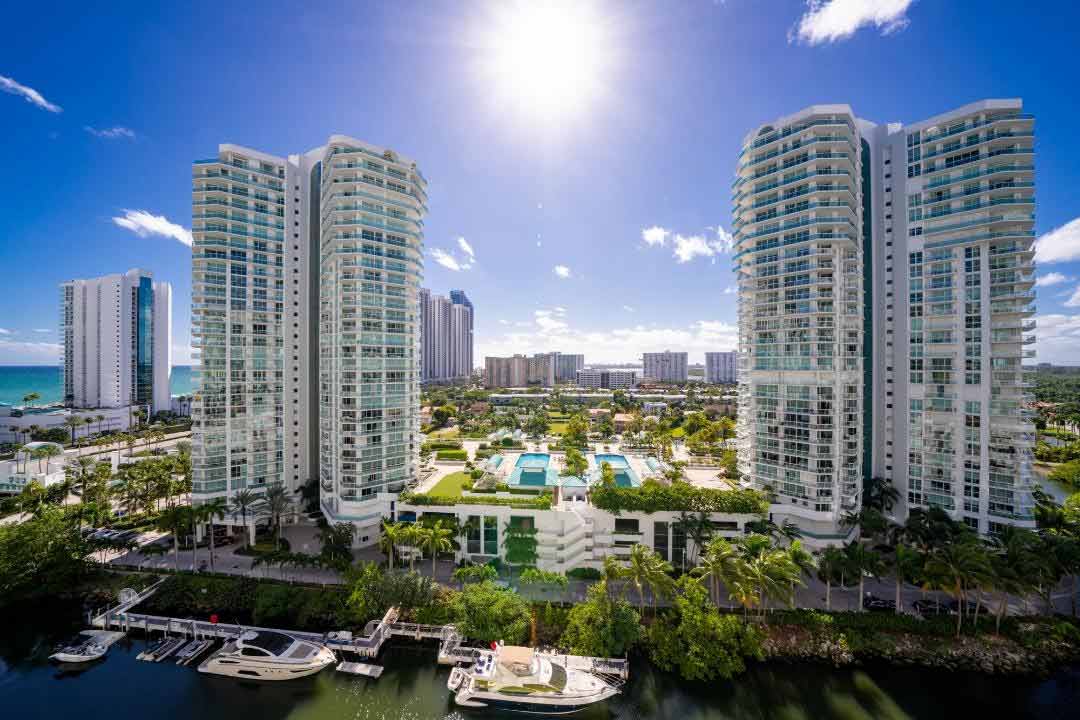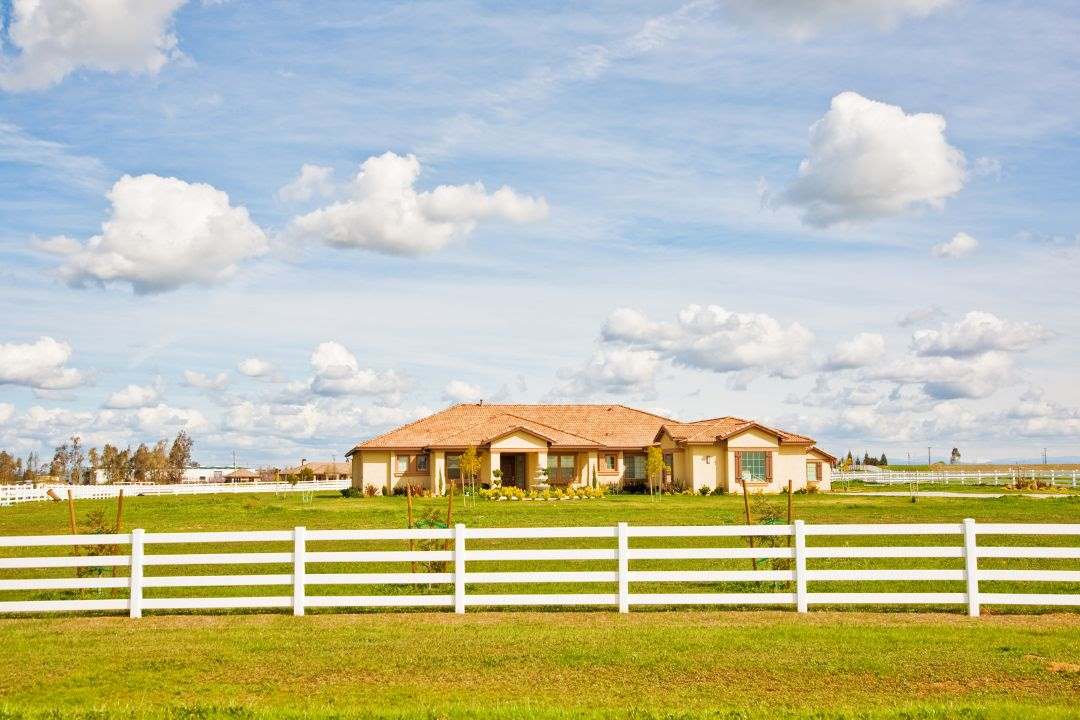In the ever-evolving landscape of real estate financing, understanding the intricacies of jumbo loans is crucial. If you’re eyeing a property that requires a loan amount exceeding the conventional conforming loan limit, you’ll need a jumbo loan. The jumbo loan down payment requirements are a pivotal factor. This article aims to demystify these requirements, offering clear, concise information to guide you through your home-buying journey.
Understanding the down payment for a jumbo loan
A jumbo loan is a mortgage that exceeds the conforming loan limits set by the Federal Housing Finance Agency. Hence, jumbo loans are referred to as “non-conforming” loans. In 2024, the conforming loan limit is $766,550 for single-family residences in most counties. Therefore, if you’re looking for a purchase loan amount of at least $766,551, welcome to the world of jumbo loans.
Because these loans are non-conforming, Fannie Mae and Freddie Mac will not buy them on the secondary market. Therefore, the down payment is a critical aspect of the loan approval process. The down payment for jumbo loans often reflects the lender’s need to mitigate risk associated with the fact that they cannot sell the loan to Fannie Mae or Freddie Mac.
Since these loans involve larger amounts of money, lenders typically require a higher down payment compared to conforming loans. This initial payment is a key factor in determining your loan terms, interest rates, and overall financial planning for your property purchase.
Jumbo loan down payment requirements for 2024
The landscape of jumbo loan down payment requirements continues to evolve, reflecting the current economic conditions and housing market trends. Understanding these requirements is crucial for borrowers looking to secure a jumbo loan.
(For those who already own a luxury property and are considering tapping into their equity, please consult our jumbo mortgage refinance guide for more details.)
Jumbo loan minimum down payment
The cornerstone of acquiring a jumbo loan is understanding the minimum down payment required, leading many to wonder how much down for a jumbo loan is needed.
In 2024, the minimum down payment for a jumbo loan typically ranges between 10% to 20% of the home’s purchase price or the appraised value, whichever is lower.
For example, let’s say you’re under contract to purchase a property for $1 million. The lender approves you for a 20% down payment, or 80% loan-to-value. You therefore expect your loan amount to be $800,000, and your down payment to be $200,000. However, the appraised value comes in at $900,000, lower than the contract price. Your final loan amount would therefore be $720,000 (80% * $900,000), and your down payment becomes $280,000 (unless you can negotiate with the seller to lower the contract price).
The down payment varies based on the lender’s policies, the borrower’s credit history, and the property’s location.
Generally speaking, a borrower with an excellent credit score and a strong financial profile might find lenders offering jumbo loans with a down payment as low as 10%. Conversely, those with less-than-ideal credit may encounter higher down payment demands.
If you own other properties that you can pledge as collateral, it is possible to qualify for 0% down payment under a cross-collateralization program, read more below.
It’s important to note that the jumbo loan down payment minimum is not just a number. It reflects the lender’s assessment of risk. A higher down payment often translates to more favorable loan terms, such as lower interest rates. Conversely, a minimum down payment for a jumbo loan might lead to higher interest rates and additional mortgage insurance requirements.
Understanding these nuances is key to navigating the jumbo loan process successfully. In the following sections, we will explore how the down payment required for a jumbo loan impacts loan terms and interest rates, and discuss various types of jumbo loans that cater to low down payment needs.

What might be your jumbo loan down payment?
How the down payment required for a jumbo loan determines loan terms and interest rates
The down payment required for jumbo loan programs is more than just an upfront cost; it plays a significant role in shaping the terms and conditions of your loan, including the interest rates. This section will explore how the size of your down payment can impact your mortgage in the long run.
Many borrowers ask, “Do jumbo loans require 20% down?” While a larger down payment typically results in more favorable loan terms, it’s not always a requirement. When you put down a substantial amount, it decreases the lender’s risk, which can lead to lower interest rates. This is because the lender’s exposure is reduced when a significant portion of the property’s value is covered by the borrower’s own funds.
On the other hand, a smaller down payment, while making the loan more accessible, might increase the lender’s perceived risk. This could lead to higher interest rates as the lender compensates for the increased risk of lending a larger percentage of the home’s value. Additionally, borrowers might be required to purchase private mortgage insurance (PMI) when the down payment is less than 20%, adding to the overall cost of the loan.
Understanding this relationship between down payment, risk, and interest rates is crucial for borrowers. It helps in making informed decisions about how much to put down and in evaluating the long-term financial implications of their mortgage choices.
In the next sections, we will delve into the types of jumbo loans that offer low down payment options and discuss strategies to ensure a low down payment on your jumbo loan.
Types of jumbo loans with a low down payment
In the realm of jumbo loans, there are low down payment jumbo mortgage programs that cater to borrowers who may not have the means for a substantial down payment.
Traditional jumbo loans with reduced down payments
In regions like Florida, where the jumbo loan limit florida is a key consideration, borrowers often ask, “Can you get a jumbo mortgage with 10% down?” Fortunately, traditional jumbo loans have evolved to offer such reduced down payment options.
These loans are ideal for borrowers with strong credit scores and stable income but who may not have the liquidity for a large down payment. Lenders offering these loans might offer down payments as low as 10-15%, depending on the borrower’s financial profile.
Portfolio jumbo loans
Portfolio jumbo loans are offered by lenders who keep the loans in their own investment portfolios instead of selling them to investors on the secondary market. These lenders have the flexibility to set their own criteria, which can include lower down payment requirements. These loans are often tailored to the borrower’s unique financial situation, providing more personalized loan solutions.
Non-QM jumbo loans
In the diverse world of jumbo loans, non-qualified mortgage (Non-QM) loans stand out, especially for those who have unique financial profiles, including self-employed entrepreneurs, freelancers, or those with significant assets but irregular income streams.
Non-QM jumbo loans also offer the flexibility to use gift funds for down payments, a feature not
commonly found in traditional jumbo loans. This option can be particularly beneficial for
borrowers who have robust income but lack immediate liquidity for a large down payment.

Which lender will offer you the best jumbo loan down payment options?
Strategies to ensure a jumbo loan low down payment
Securing a jumbo loan low down payment requires strategic planning and a thorough understanding of your financial options. This section will discuss various strategies that can help you achieve a lower down payment on your jumbo loan.
Improving credit score
One of the most effective strategies, especially for those wondering “Can I get a jumbo mortgage with 5% down,” is to improve your credit score. A higher credit score can significantly enhance your bargaining power with lenders, potentially leading to lower down payment requirements. Paying off debts, maintaining low credit card balances, and ensuring timely bill payments are key steps in boosting your credit score.
Shopping around for lenders
Different lenders have varying requirements and offerings for jumbo loans. It’s essential to shop around and compare the terms offered by various lenders. Some may offer jumbo loans with lower down payments than others, especially if they have specialized programs for borrowers with strong financial backgrounds.
Considering adjustable-rate mortgages (ARMs)
Adjustable-rate mortgages (ARMs) might provide an avenue for lower down payments compared to fixed-rate jumbo loans. While ARMs come with the risk of interest rate fluctuations, they can initially offer lower interest rates and lower down payment requirements.
Exploring co-signing options
Having a co-signer with a strong financial profile can also help in securing a jumbo loan with a lower down payment. A co-signer reduces the lender’s risk, which might lead to more favorable loan terms, including a reduced down payment.
Accumulating financial reserves
Demonstrating substantial financial post-closing reserves can reassure lenders of your ability to repay the loan, potentially leading to a lower down payment requirement. Lenders are more likely to offer favorable terms if they see that you have significant savings or investments.
By employing these strategies, borrowers can enhance their chances of securing a jumbo loan with a lower down payment. In the next section, we will explore the relationship between jumbo mortgage down payments and non-QM loans.
Jumbo mortgage down payment & non-QM loans
In the diverse landscape of mortgage options, non-QM loans emerge as a significant alternative for certain borrowers, especially in the context of jumbo loans and their down payment requirements. This section will explore how non-QM loans intersect with jumbo mortgage down payments.
A common query is, “How much down payment for a jumbo loan,” when considering Non-QM loans, which are designed for borrowers who don’t fit the traditional lending criteria. These might include self-employed individuals, those with irregular income streams, or borrowers with unique financial situations. Non-QM loans offer more flexible underwriting standards, which can be advantageous for those seeking jumbo loans.
Flexibility in down payment requirements
One of the key features of non-QM loans is their flexibility with jumbo loans down payment requirements. Unlike traditional jumbo loans, which typically have stringent down payment criteria, non-QM lenders may offer more lenient terms. This can be particularly beneficial for borrowers who have the financial means to manage a mortgage but may not have a large sum available for a down payment.
Some of the most creative non-QM jumbo loan options include:
- High loan amount and low down payment: You can get the best of both worlds: high loan amount and high leverage. Whereas some lenders only go up to $3M at 80% LTV, others surpass that with up to $7.5M at 80% LTV.
- Cross-collateralization: This program allows borrowers who own other properties to use the equity in those properties as collateral for the super jumbo loan. It can be used for both new purchases and refinances, and the loan-to-value ratio (LTV) can reach up to 100% with sufficient collateral and proof of reserves, meaning your down payment would be 0%.
- Pledged assets: Borrowers can use assets such as cash, CDs, savings accounts, stocks, and bonds as collateral to secure a jumbo loan with a low down payment requirement.
- Asset depletion: This technique is beneficial for borrowers with significant wealth but limited documented income. Lenders calculate the duration that the borrower’s assets can generate enough income to cover the mortgage and carrying costs, and if it meets the lender’s threshold, the mortgage is approved at a relatively low down payment.
- Non-warrantable condos: Unlike traditional lenders, non-QM lenders are willing to lend on condominiums that don’t adhere to Fannie Mae and Freddie Mac guidelines, even offering 20% down payment on such condos.
In the following section, we will present case studies on low-down payment jumbo mortgages, illustrating real-world applications of these financing options.
Case studies on low down payment jumbo mortgages
Real-world examples provide valuable insights into the question of “how much down on a jumbo loan” is needed. Here are three borrowers who DAK Mortgage helped get approved for a program with a low jumbo loan down payment requirement.
20% down payment on super jumbo loan
Our client was under contract to purchase a home in California for $6.2 million. He had previously gone to his bank, but they capped his loan amount at $3M.
We introduced him to a private bank with a healthy appetite for higher-leverage jumbo loans.
Although his self-employed income was a little difficult to calculate, our client got his desired $4.96M at 80% LTV, and the deal was saved for the realtors. Only one appraisal was required (instead of two), and the loan was cleared to close in only 15 business days.
20% down payment on jumbo loan for a non-warrantable condo
Our client, who recently moved with his family from New York to South Florida went under contract with the developer to purchase a newly constructed condominium in a high-rise luxury building in Florida for $2.5 million.
Although he had an excellent credit score, a low debt-to-income ratio, and was able to show full documentation of income through 2 years of tax returns, our client faced a huge challenge.
The condo was non-warrantable due to the following factors:
- The condominium association had zero reserves in its budget.
- And, control of the association had yet to be turned over from the developer to the unit owners.
- Also, the association’s bylaws contained language limiting the lender’s ability to resell the property in the event of a foreclosure.
The financial health and status of the condominium association – especially the lack of any reserves – made the deal very risky for most banks and lenders. Traditional lenders typically require the association to have a healthy level of reserves in their budget in case repairs or other big expenditures arise.
Despite those issues, we got him approved for a 20% down payment jumbo loan. We successfully closed the $2 million loan for our client, with time to spare before the closing deadline.
10% down payment on jumbo loan for a challenging situation
Our client, who was previously turned down by another lender for credit history items due to an IRS tax lien, needed a jumbo loan to purchase a house in Florida.
One challenge we faced was the appraised value was lower than the contract price. Because the lender bases the loan amount on the lower of the contract price and the appraised value, our client needed a higher LTV.
We were able to obtain 90% LTV for him by taking him to a non-QM lender specializing in jumbo loans.
DAK Mortgage: Your partner for super jumbo & jumbo loans
In the intricate world of jumbo and super jumbo loans, having a knowledgeable and experienced partner is invaluable. DAK Mortgage prides itself on being that partner, offering expert guidance and tailored solutions for your mortgage needs.
Our strong relationships with a wide range of lenders – traditional jumbo lenders, portfolio jumbo lenders, and non-QM lenders alike – allow us to offer you competitive rates and terms on jumbo and super jumbo loans. We leverage these relationships to negotiate the best possible conditions for your mortgage, including lower down payment options where applicable.

DAK Mortgage has the expertise to get you the best jumbo loan down payment.
The future of jumbo loans down payment requirements
It’s important to consider how lenders’ requirements for the minimum down payment on a jumbo loan might evolve.
Most importantly, the conforming loan limits change annually, so it is important to monitor the FHFA’s announcements (usually toward the end of each year) to see what changes might go into effect for the following year. For example, at the end of 2023, the FHFA announced that the 2024 conforming loan limit value for one-unit properties would be $766,550, an increase of $40,350 from 2023.
Lenders continuously adapt their products to meet market demands and borrower needs, including 0% down payments on jumbo loans, for example, under the cross-collateralization program described above.
DAK Mortgage keeps its finger on the pulse to monitor any new customized jumbo loan options that come onto the market.
FAQs
Can you put 5% down on a jumbo loan?
While jumbo loans typically require higher down payments, some lenders may offer as little as 5% down. These options are less common and may come with additional requirements such as private mortgage insurance. Seek a mortgage broker with connections to creative loan options offered by non-QM lenders for example.
Can you put 10% down on a jumbo loan?
Yes, it is possible to put 10% down on a jumbo loan. This option is more readily available and is often contingent on the borrower’s creditworthiness, income stability, and the lender’s policies. A 10% down payment can be a viable option for those with strong financial profiles.
Do jumbo loans require 20% down?
While many lenders traditionally require a 20% down payment for jumbo loans, this is not a universal standard. The required down payment can vary based on the lender, the borrower’s credit history, and other financial factors. In some cases, borrowers may find jumbo loan options with lower down payment requirements.









